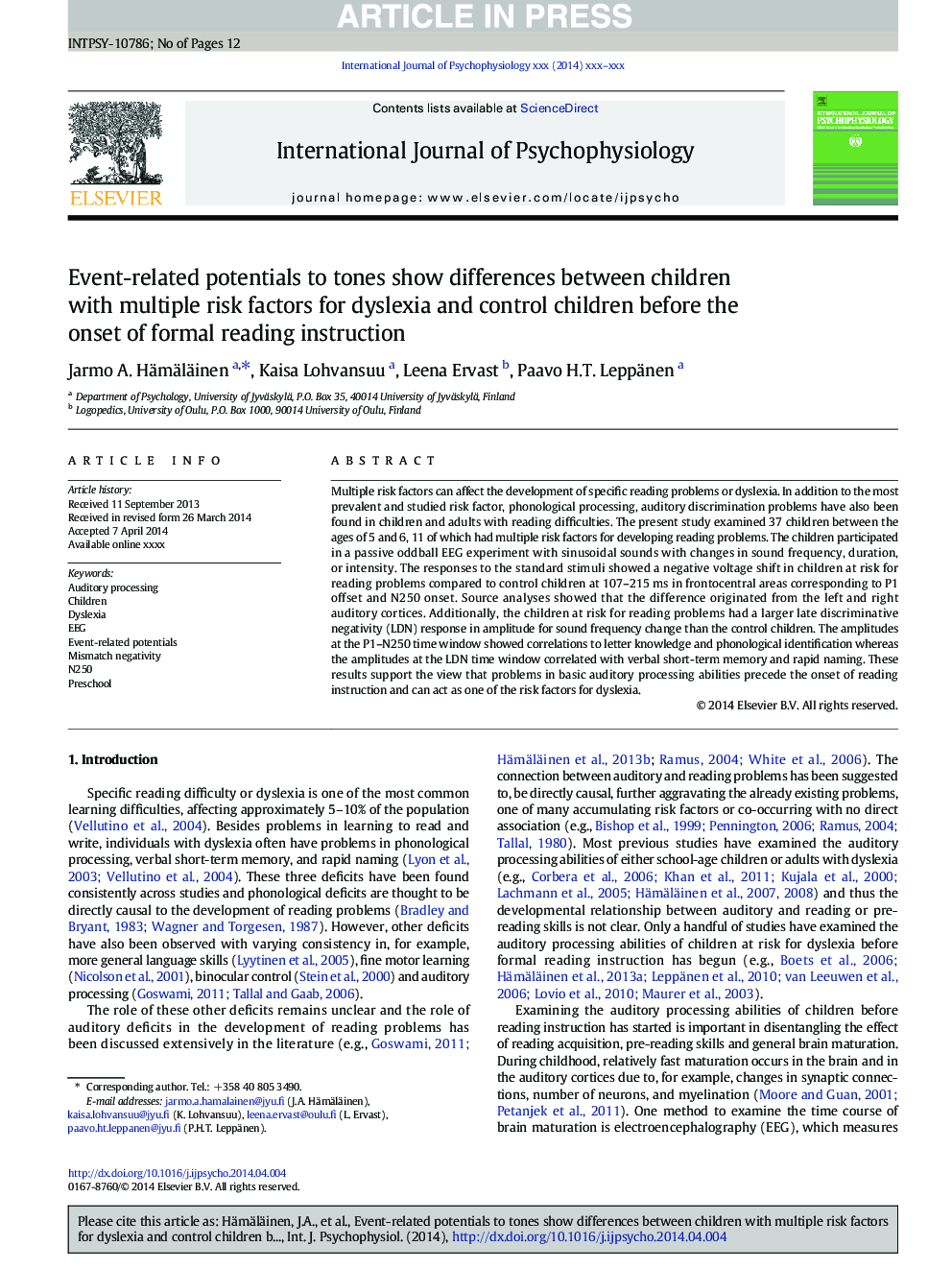| Article ID | Journal | Published Year | Pages | File Type |
|---|---|---|---|---|
| 7295565 | International Journal of Psychophysiology | 2015 | 12 Pages |
Abstract
Multiple risk factors can affect the development of specific reading problems or dyslexia. In addition to the most prevalent and studied risk factor, phonological processing, auditory discrimination problems have also been found in children and adults with reading difficulties. The present study examined 37 children between the ages of 5 and 6, 11 of which had multiple risk factors for developing reading problems. The children participated in a passive oddball EEG experiment with sinusoidal sounds with changes in sound frequency, duration, or intensity. The responses to the standard stimuli showed a negative voltage shift in children at risk for reading problems compared to control children at 107-215Â ms in frontocentral areas corresponding to P1 offset and N250 onset. Source analyses showed that the difference originated from the left and right auditory cortices. Additionally, the children at risk for reading problems had a larger late discriminative negativity (LDN) response in amplitude for sound frequency change than the control children. The amplitudes at the P1-N250 time window showed correlations to letter knowledge and phonological identification whereas the amplitudes at the LDN time window correlated with verbal short-term memory and rapid naming. These results support the view that problems in basic auditory processing abilities precede the onset of reading instruction and can act as one of the risk factors for dyslexia.
Keywords
Related Topics
Life Sciences
Neuroscience
Behavioral Neuroscience
Authors
Jarmo A. Hämäläinen, Kaisa Lohvansuu, Leena Ervast, Paavo H.T. Leppänen,
